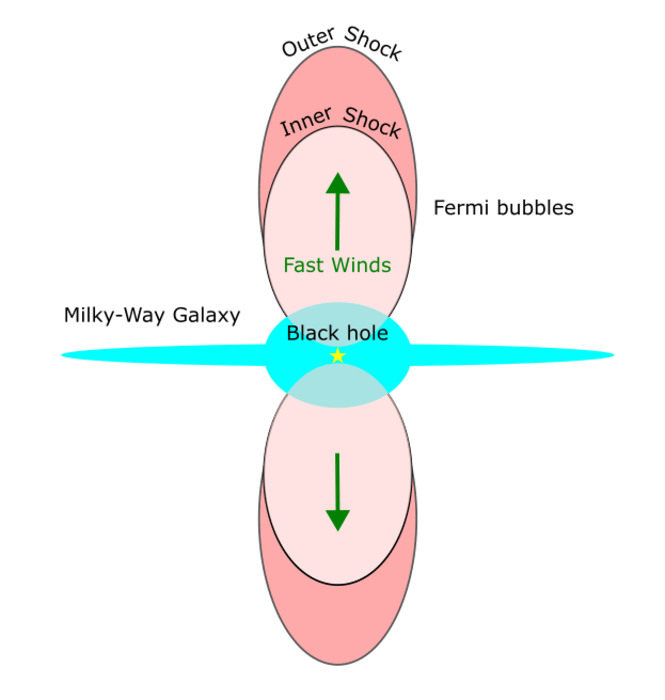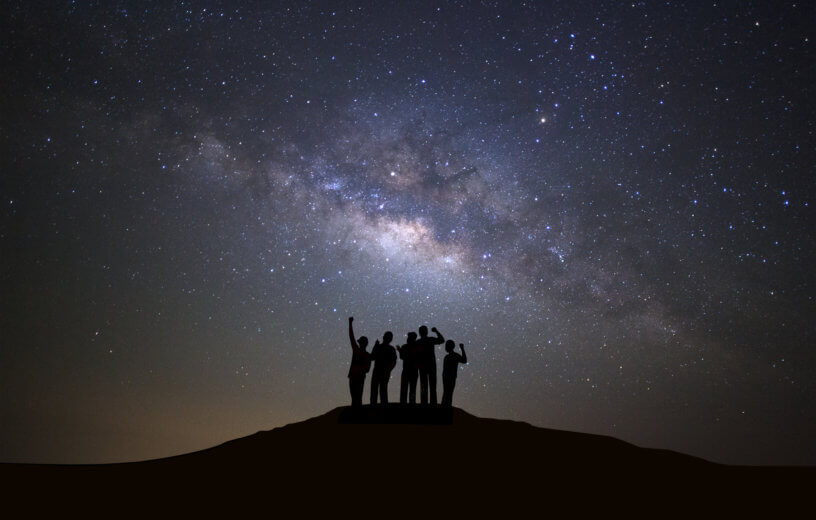TOKYO — There’s no shortage of mysteries in need of solving out in space, but fascinating new findings out of Japan appear to have answered at least one lingering question. Researchers from Tokyo Metropolitan University may have discovered the origin of large gamma ray-emitting bubbles around the center of our galaxy, the Milky Way.
The universe is full of massive celestial objects that humanity has yet to fully grasp or understand. One example is “Fermi bubbles,” first discovered in 2010 by the Fermi Gamma-ray Space Telescope. These gigantic bubbles are huge gamma ray-emitting regions extending to either side of the center of our galaxy over roughly 50,000 light years.
The bubbles “stick out” from the plane of the Galaxy like balloons. It’s hard to accurately describe just how massive these bubbles are, and up until now their origins have puzzled scientists.
Now, study authors explain the bubbles are likely created by fast blowing outward winds and a “reverse shock.” Simulations performed by researchers successfully reproduced the temperature profile observed by an X-ray telescope. Similar outflows have been seen in other galaxies, suggesting similar winds may have been blowing in our own galaxy until recently.

Winds in space are very different from those on Earth
While many theories about their origins have been discussed since their discovery — including an explosive activity of the central supermassive black hole, winds from the black hole, and steady star formation activity — Professor Yutaka Fujita says there’s compelling new theoretical evidence demonstrating how these bubbles may form.
What sets this latest work apart from the rest? State-of-the-art X-ray observations from the Suzaku satellite, researchers explain, afforded them the opportunity to compare measurements with expectations across various scenarios.
The simulations put together by Prof. Fujita’s team accounted for fast outflowing winds from the black hole — providing the necessary energy into the gas surrounding the center of the Milky Way. After comparing the measured profiles, study author report “a good chance” that the bubbles are created by the fast outflowing winds blowing at 1,000 kilometers per second over 10 million years.
To be clear, these are not winds as one might experience on planet Earth. These are streams of highly charged particles traveling at high speeds and propagating through space. These galactic winds move outwards and interact with surrounding “halo gas,” resulting in a “reverse shock” that creates a characteristic temperature peak. The Fermi bubbles even correspond to the volume on the inside of this reverse shock front.
Meanwhile, the simulations also confirmed that an instantaneous explosion at the center would not reproduce the profiles seen by the telescope, lending further weight to a scenario focused on steady winds generated by the central black hole.
The study is published in the journal Monthly Notices of the Royal Astronomical Society.

